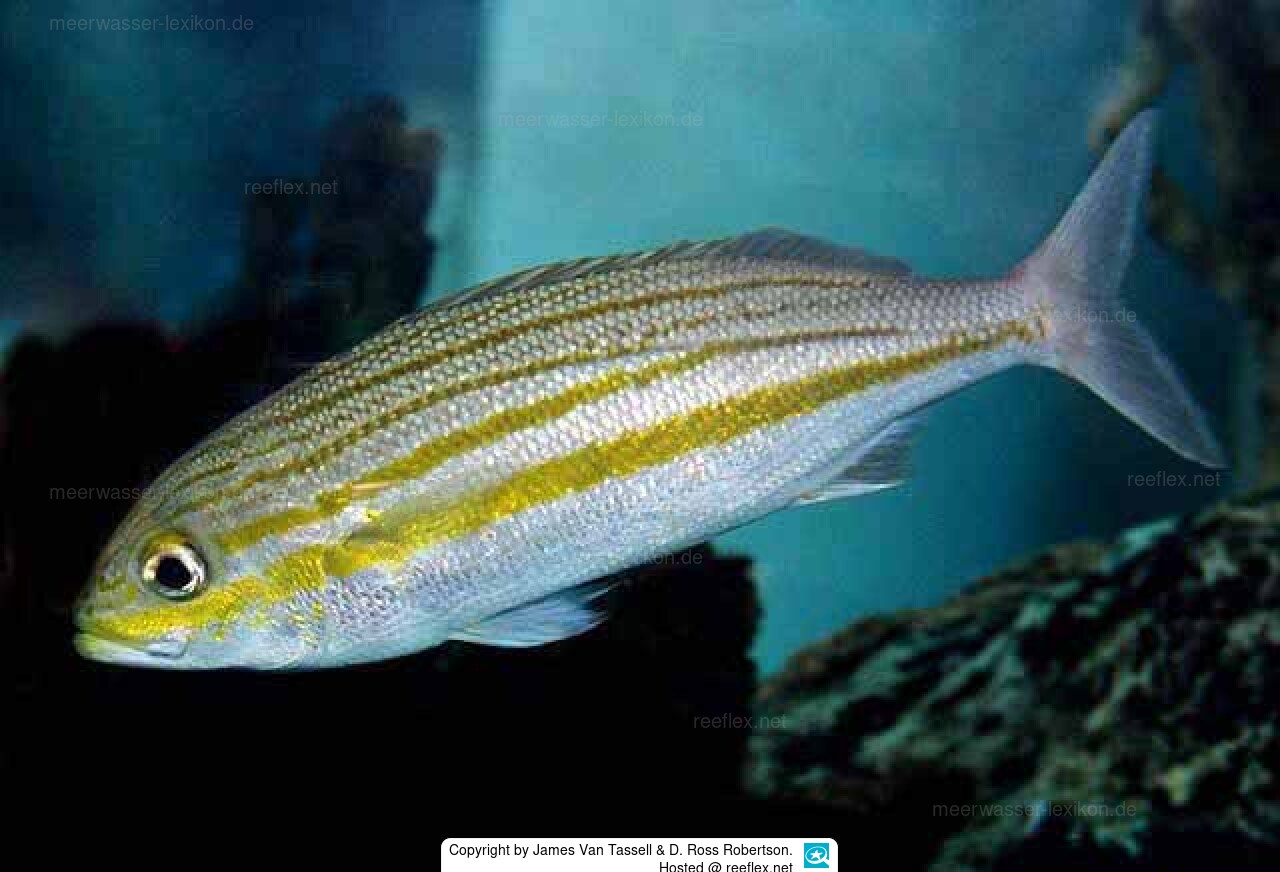Info
The striped grunter Haemulon striatum forms large schools over shelf-edge reefs in Caribbean waters.
Adults are gray to bluish on the upper side of the body, silvery on the ventral side.
Their snout is sometimes yellow.
5 bronze to brown stripes run along the top 2/3 of the head and body, all fins are clear to chalk colored.
The inside of the mouth is red.
Juveniles initially have only two long dark stripes + a shorter, thinner and darker stripe starting from above behind the eye.
A faint (or absent) oval dark spot can be seen at the base of the caudal fin.
Juvenile specimens are very common near coral heads at depths of 25 to 40 meters, and are encountered in schools with the sawfish Schultzea beta (Hildebrand, 1940).
Synonyms:
Bathystoma striatum (Linnaeus, 1758)
Perca striata Linnaeus, 1758
Adults are gray to bluish on the upper side of the body, silvery on the ventral side.
Their snout is sometimes yellow.
5 bronze to brown stripes run along the top 2/3 of the head and body, all fins are clear to chalk colored.
The inside of the mouth is red.
Juveniles initially have only two long dark stripes + a shorter, thinner and darker stripe starting from above behind the eye.
A faint (or absent) oval dark spot can be seen at the base of the caudal fin.
Juvenile specimens are very common near coral heads at depths of 25 to 40 meters, and are encountered in schools with the sawfish Schultzea beta (Hildebrand, 1940).
Synonyms:
Bathystoma striatum (Linnaeus, 1758)
Perca striata Linnaeus, 1758







 Drs. James Van Tassell & D. Ross Robertson
Drs. James Van Tassell & D. Ross Robertson




















